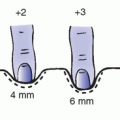Year |
Significant Advancement |
1900 |
Karl Landsteiner discovered three of four main blood groups |
1914 |
Sodium citrate was first used to preserve blood
Hydrolyzed protein and fats were administered to animals |
1925 |
Dextrose was used as an infusate |
1935 |
Marriot and Kekwick introduced slow-drip method of transfusion |
1937 |
Rose identified amino acids essential for growth |
1940 |
Disposable plastic administration sets were developed |
1945 |
Flexible intravenous (IV) cutdown catheter was introduced |
1950 |
Rochester needle was introduced |
1960 |
Peripherally inserted catheter lines were introduced in intensive care areas |
1963-1965 |
First success with hyperalimentation at the University of Pennsylvania |
1964 |
First disposable intravenous catheter introduced by Deseret |
1970 |
Centers for Disease Control (CDC) guidelines for IV therapy were published
First edition of Plumer’s Principles and Practice of Intravenous Therapy was published |
1972 |
Access with implanted ports was introduced |
1972 |
The American Association of IV Nurses was organized by Ada Plumer, Marguerite Knight, and colleagues |
1973 |
The professional society name was changed to reflect a more inclusive audience—National Intravenous Therapy Association (NITA)
Broviac tunneled catheter was introduced |
1976 |
Fat emulsions were used for nutritional support |
1980 |
NITA Standards of Practice was published
NITA National Office opened
IV Nurse Day was recognized by U.S. House of Representatives |
1981 |
CDC Guidelines were revised and published |
1982 |
Implantable ports were used for long-term access
First IV teaching program in People’s Republic of China |
1983 |
Home blood transfusion initiated
Osteoport was developed |
1984 |
Core Curriculum for Intravenous Nursing was published |
1985 |
Intravenous Nurses Certification Corporation offered its first credentialing examination (CRNI) |
1986 |
Use of patient-controlled analgesia increased |
1987 |
Development by the Centers for Disease Control and Prevention (CDC) of “standard precautions” |
1987 |
NITA changed its name to the Intravenous Nurses Society (INS) |
1990 |
Safe Medical Device Act and Food and Drug Administration Device Reporting regulations published
INS Revised Standards of Practice published |
1992 |
U.S. Food and Drug Administration issued alert concerning needlestick injuries |
1995 |
Occupational Safety and Health guidelines for handling cytotoxic drugs published |
1996 |
LPNI examination offered to LPN/LVNs by INS
CDC Guidelines revised and published |
1998 |
INS celebrated its 25th Anniversary (Houston, TX) |
1999 |
Journal of Intravenous Nursing offered CE/recertification units |
2000 |
Core Curriculum for Intravenous Nursing, 2nd edition, published
Revised Standards of Practice published
INS Policies and Procedures Manual published
CRNI Exam Preparation Guide & Practice Questions published
First public member added to the INS board of directors |
2001 |
The organization’s name again changed to the Infusion Nurses Society reflecting the expansive role of the infusion nursing specialist |
2002 |
Publication of the CDC Guidelines for the Prevention of Intravascular Catheter-Related Infections supporting the use of trained personnel |
2003 |
Core Curriculum for Infusion Nursing, 3rd edition, published
Infusion Nurses Society celebrates its 30th year |
2004 |
Infusion Nurses Society Standards for Adult Patients published |
2005 |
Revised Infusion Nurses Standards of Practice published |
2006 |
Plumer’s Principles and Practice of Intravenous Therapy, 8th edition, published |
2006 |
Revised Infusion Nurses Standards of Practice published |
2006 |
Initiation of central line bundling recommendations by the Institute for Healthcare Improvement |
2011 |
Policies and Procedures for Infusion Nursing, 4th edition, published by the Infusion Nurses Society |
2011 |
Revised Infusion Nurses Standards of Practice published |
2012 |
Policies and Procedures for Infusion Nursing of the Older Adult published by the Infusion Nurses Society |
2013 |
Infusion Nurses Society celebrates its 40th year where it began |
2014 |
Plumer’s Principles and Practice of Infusion Therapy, 9th edition, published with a name change to reflect current practice and a co-author |
 PATIENT SAFETY
PATIENT SAFETY








